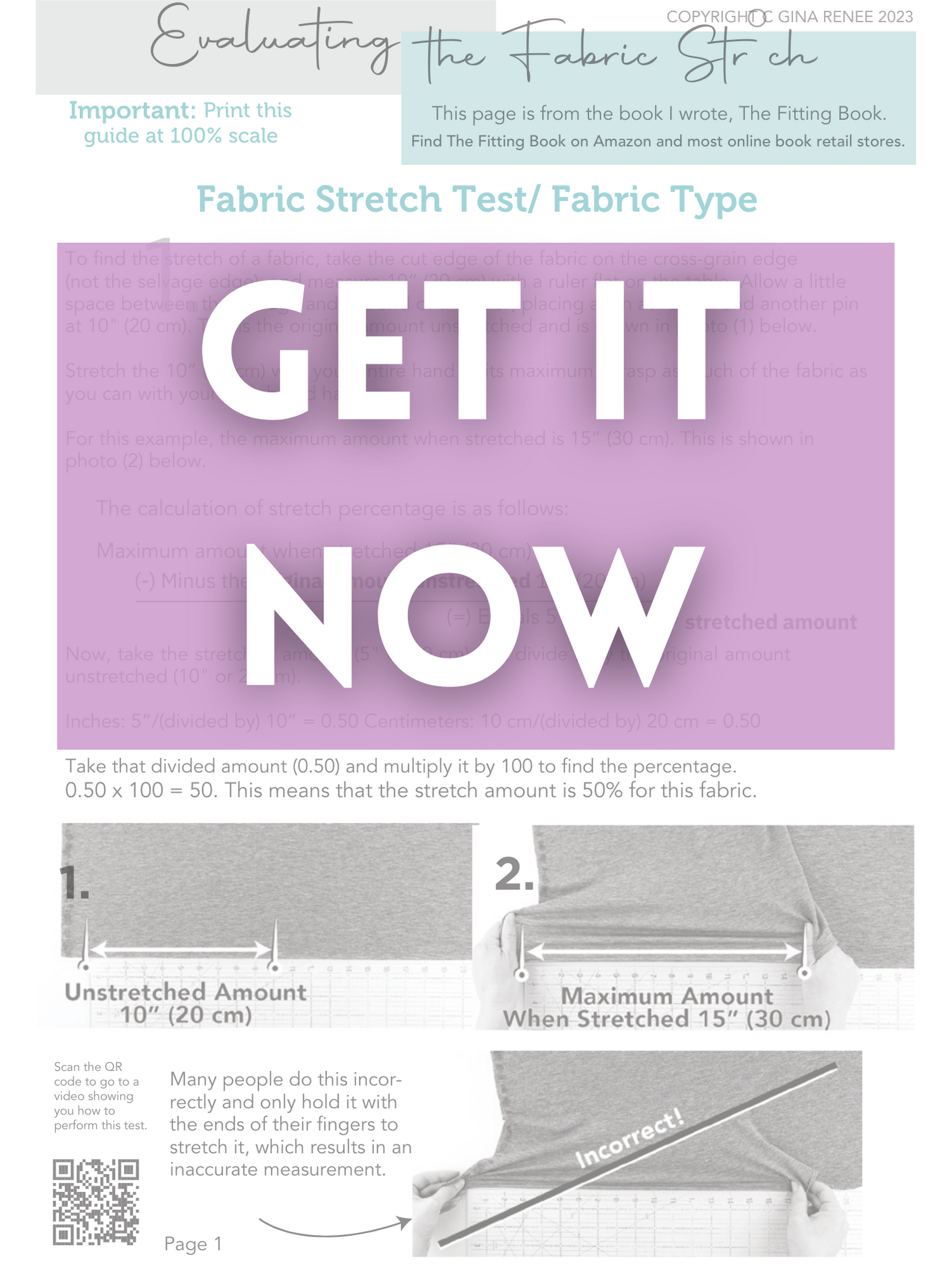
Download Your
FREE Fabric Stretch Ruler
Measure and Calculate
the Stretch Percentage of your Fabrics
to Find Out How it will Affect your Ease Amounts.
Send me my Free Fabric Stretch Ruler
How to Measure Fabric Stretch Percentage and Why it Matters
One of the most critical things to consider when starting a new sewing project is the stretch factor of your chosen fabric. The stretch factor will make your garment either fit perfectly or end up with uncomfortable fitting issues.
Before we dive in, let’s clarify the difference between the stretch factor and stretch percentage. The stretch factor is often labeled as minimal stretch, moderate stretch, or high stretch, indicating the fabric’s ability to stretch. On the other hand, the stretch percentage represents the physical amount. There can be many stretch percentages within one stretch factor category.
The stretch factor is the driving characteristic to achieving the right amount of negative ease in your garments. Doing a stretch test before starting your sewing project will help you to accurately calculate negative ease and ensure optimal fitting.
To measure the horizontal stretch, begin by measuring the width of your fabric from one selvage (selvedge) to the other, meaning from one end to the other. Place pins at the 0 and 10″ marks (or 0 and 20cms marks). Gently fold the fabric and pin it at these points. Now, hold the fabric from the zero position and stretch the other end as far as it naturally goes. To measure the vertical stretch, repeat the process for the vertical length of the fabric using the same unit of measurement. Document the stretch percentages.
With this information, you’ll have a reliable reference point to streamline your sewing process and to help you adjust your patterns more accurately.
Now, it’s important to note the difference between two-way and four-way stretch fabrics. Contrary to common belief, a two-way stretch refers to the fabric stretching horizontally in both directions. A four-way stretch, on the other hand, means that the fabric has both horizontal and vertical stretch capabilities. It’s important to remember this distinction when selecting fabrics to make sure they align with your project’s requirements.
Understanding fabric stretch factors and percentages lets you make informed decisions about your sewing projects, for example, determining the perfect amount of negative ease you need. Every step becomes more precise when you know what the fabric you intend to use allows.
Get your handy Stretch Factor Ruler now for you to easily identify these percentages. Fill out the form above and get it now.